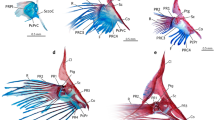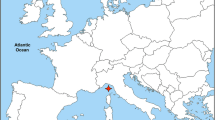Abstract
PERIPHERAL nerves exert strong trophic influences on the muscles they supply. Although not well understood, the crucial role of nerves in regulating development, regeneration and normal maintenance of limb muscles in vertebrate and invertebrate animals is assumed to depend on a direct anatomical relationship between the axons and their targets. The trophic nervous mechanisms which operate during limb regeneration and development may be studied profitably in crustaceans, many of which possess opposite limbs which are morphologically and functionally dissimilar. Homarid lobsters, for example, have one enlarged heavy crusher claw and a more slender, highly serrated ripper claw on the opposite side. Sexually mature male fiddler crabs have a greatly enlarged claw on one side only, and many other crustaceans show similar bilateral differences in relative claw size. The snapping shrimps (Family Alpheidae) show especially dramatic cheliped asymmetries. In these animals, one of the two claws is tremendously enlarged and also differs greatly in external morphology from its opposite number (Fig. 1). Snapping shrimps use their enlarged ‘snapper’ claw mainly in aggressive encounters with conspecific shrimp1. Exoskeletal and/or muscular arrangements permit the dactyl of the snapper claw to close against the propodite with great force2. This action generates an intense jet of water from a specialised region of the propodite and also produces an audible snap. We describe here changes not only in the size and function, but also in the morphology of the terminal limb segments in this shrimp following damage to a distant anatomically separate nervous pathway. At least one, if not several, synapses intervene between the damaged neurones and those which make functional contact with muscles in the affected limb. Thus, these findings imply that peripheral nerves need not make direct anatomical contact with the targets of their trophic influences.
This is a preview of subscription content, access via your institution
Access options
Subscribe to this journal
Receive 51 print issues and online access
$199.00 per year
only $3.90 per issue
Buy this article
- Purchase on Springer Link
- Instant access to full article PDF
Prices may be subject to local taxes which are calculated during checkout
Similar content being viewed by others
References
Schein, H. Mar. Behav. Physiol. 3, 83–96 (1975).
Ritzmann, R. Science 181, 459–460 (1973); J. comp. Physiol. 95, 217–236 (1974).
Przibram, H. Arch. Entw. Mech. Org. 11 (1901).
Wilson, E. B. Biol. Bull. 4, 197–210 (1903).
Kopec, St. J. exp. Zool. 37, 15–25 (1923).
Nuesch, H. Revue suisse Zool. 59, 294–301 (1952); Verh. naturf. Ges. Basel 68, 194–216 (1957).
Williams, C. M. & Schneiderman, H. A. Anat. Rec. 113, 560 (1952).
Wiesel, T. N. & Hubel, D. H. J. Neurophysiol. 26, 1003–1017 (1963).
Kuno, M. & Llinas, R. J. Physiol., Lond. 210, 807–821, 823–838 (1970).
Axelson, J. & Thesleff, S. J. Physiol., Lond. 147, 178–193 (1959).
Downman, C. B. B., Eccles, J. C. & McIntyre, A. K. J. comp. Neurol. 98, 9–36 (1953).
Bentley, D. R. Science 187, 760–763 (1975).
Matsumoto, S. G. & Murphey, R. K. J. Physiol., Lond. 268, 533–548 (1977).
Murphey. R. K., Mendenhall, B., Palka, J. & Edwards, J. J. comp. Neurol. 159, 407–418 (1975).
Wiersma, C. A. G. & Ripley, S. H. Physiologia comp. Oecol. 2, 391–405 (1952).
Author information
Authors and Affiliations
Rights and permissions
About this article
Cite this article
MELLON, D., STEPHENS, P. Limb morphology and function are transformed by contralateral nerve section in snapping shrimps. Nature 272, 246–248 (1978). https://doi.org/10.1038/272246a0
Received:
Accepted:
Issue Date:
DOI: https://doi.org/10.1038/272246a0
Comments
By submitting a comment you agree to abide by our Terms and Community Guidelines. If you find something abusive or that does not comply with our terms or guidelines please flag it as inappropriate.



